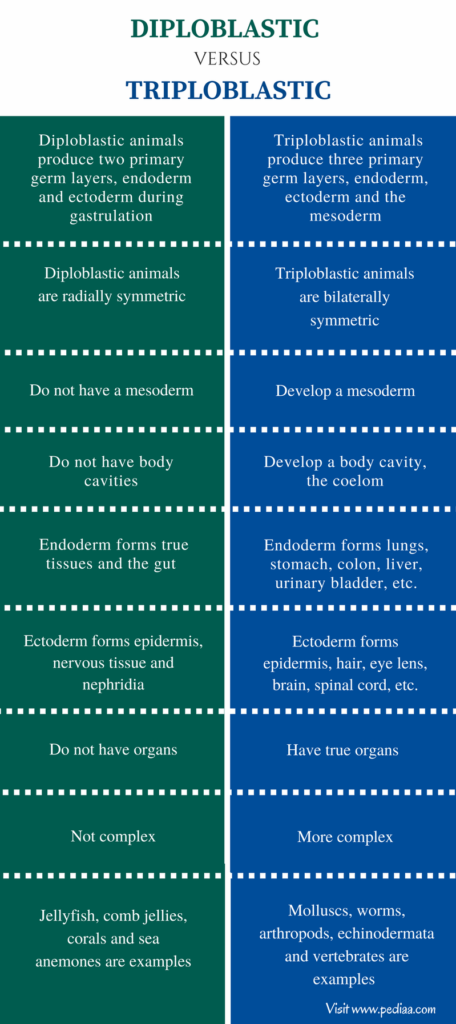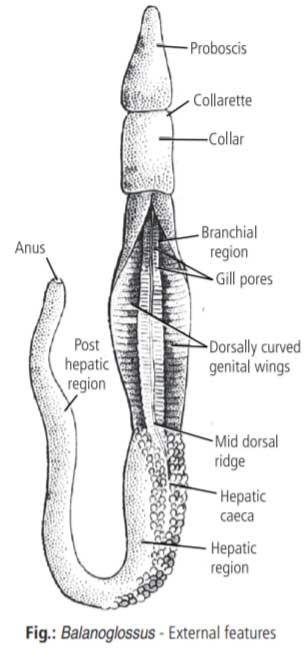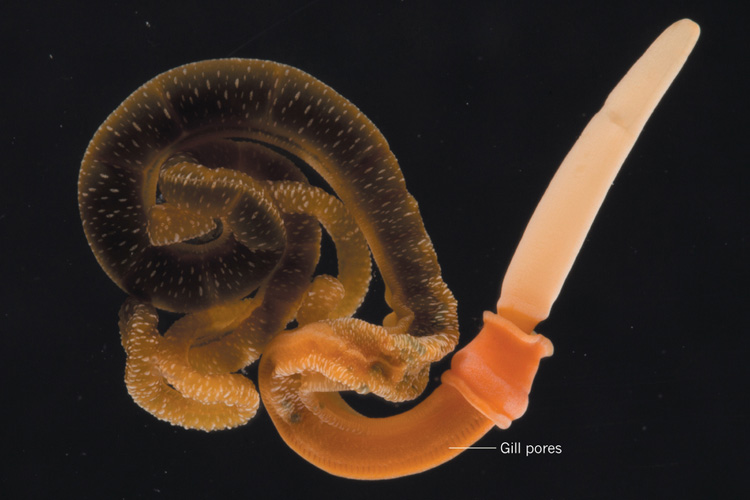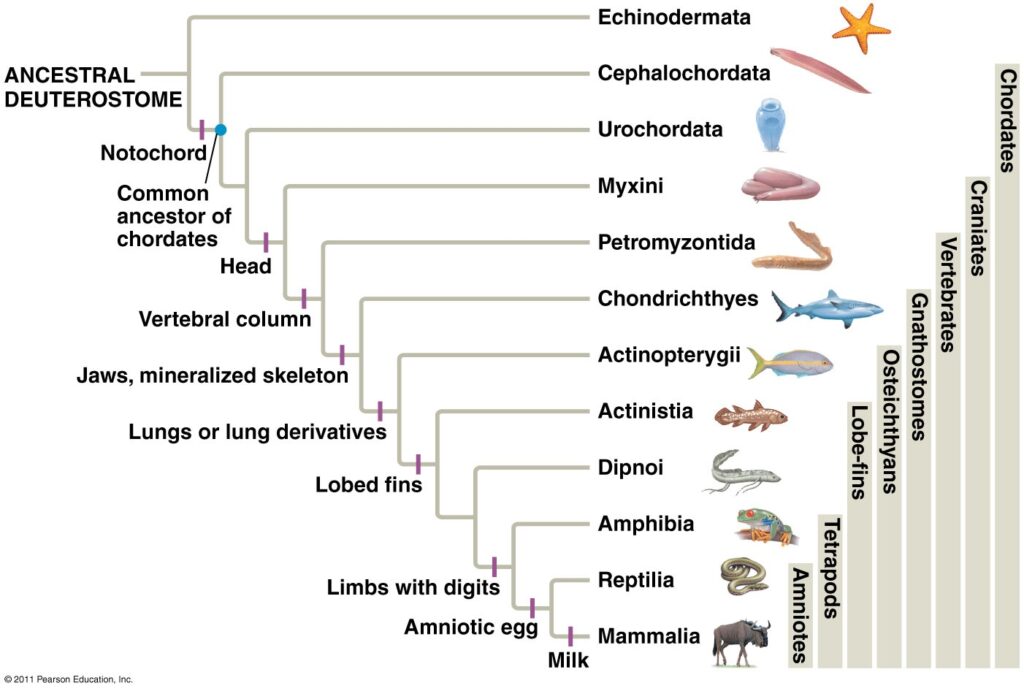
Station 1: Vertebrates Have True Tissues
- Phylum Porifera: Sponges have no true tissues.
- Cellular level of organization
- No germ layers
- Radial or no symmetry
- Internal skeleton consisting of spicules
- Body cavity consisting of a spongocoel
Sponges are classified into four classes based on the structure of the spicules in their skeleton. Three main body forms occur: Asconoid, Syconoid, and Leuconoid. Division of labor among cells with limited level of specialization.
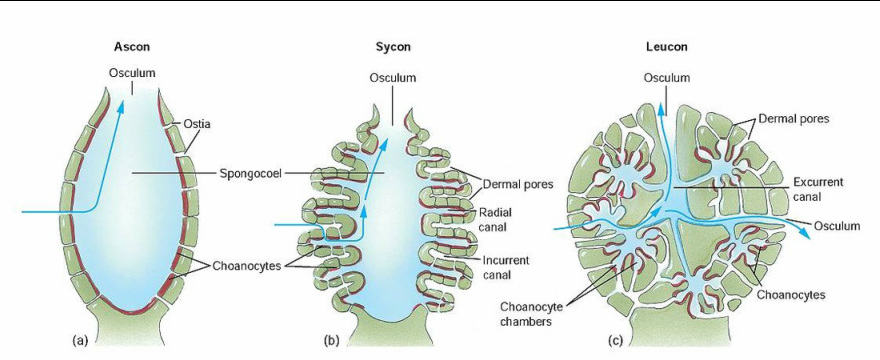
Tissue = An aggregation of morphologically similar cells and associated intercellular matter acting together to perform one or more specific functions in the body.
- There are four basic types of tissue in animals:
- muscle
- nervous
- epithelial – outer covering, lining of organs/body cavities, glands
- connective – adipose, bone, cartilage, blood, fibrous, and loose
Animals other than sponges have true tissues.
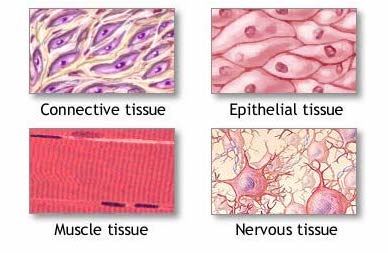
1) What are the simplest and among earliest forms of animals? Provide common term and Phylum name
2) What is MOST notable about the structural organization of this group? Do they have true tissues?
3) What is a tissue?
4) Name four types of tissues in animals.
Station 2: Vertebrates are Triploblastic and Have Bilateral Symmetry
- Diploblastic – have only 2 germ layers
- Ectoderm: becomes outer covering, becomes nervous tissue in some animals
- Endoderm: innermost germ layer, becomes lining of digestive tract, also liver and lungs in vertebrates
- Triploblastic – have three germ layers
- Ectoderm
- Endoderm
- Mesoderm : middle layer, forms muscles and most organs
- Radial Symmetry – symmetrical around central axis, and have a top and bottom
- Oral (mouth)
- Aboral (opposite side of mouth)
- Bilateral symmetry – symmetrical either side of central plane
- Some radial symmetric adults have bilateral symmetry during developmental stage (e.g sea urchins)
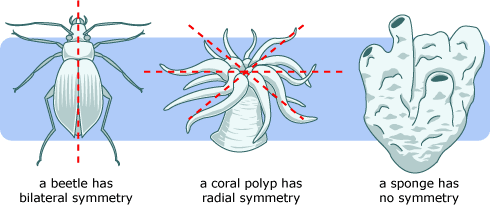
Radiata are animals that are dipoblastic and radially symmetric
- PHYLUM CNIDARIA – Hydra, jellies, sea anemones, & corals
- About 10,000 species of Cnidaria exist.
- All are aquatic and most are marine.
- These include the jellies, corals, the sea anemones, and some other organisms.
- Cnidarians have two forms. Both show radial symmetry:
- polyp (sessile)
- medusa (free-floating)
- PHYLUM CTENOPHORA – Comb jellies
- Ctenophores resemble medusae of Cnidarians.
- Have ctenes, which are 8 rows of comb-like plates composed of cilia used for locomotion
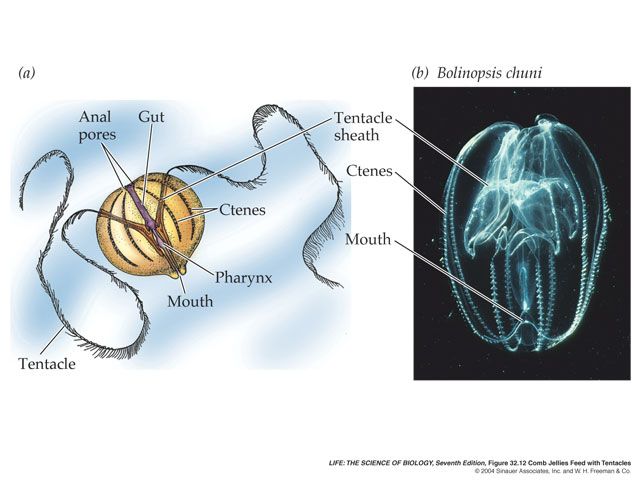
Animals that are triploblastic and bilaterally symmetric are known as Bilateria

Roles of Germ Layers in Vertebrates
- Ectoderm
outermost layer
superficial layers of skin
linings of anterior/posterior sections of digestive tract
nervous system, including sense organs - Endoderm
interior layer
most of lining digestive tract
lining of gut glands
liver, pancreas
lining of respiratory surfaces
gill surface, lung surface - Mesoderm
middle layer
last of the layers to appear
skeleton (including notocord)
muscle
connective tissues
circulatory system
urogenital system
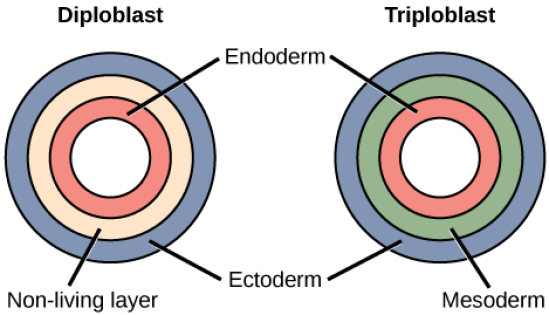
1) What is the difference between diploblastic and triploblastic
2) What is the difference between radial symmetry and bilateral symmetry?
3) Name two Phyla of animals that are diploblastic and radially symmetric?
4) Which germ layers are found in diploblastic animals and which germ layer arises with the mergence of triploblastic animals?
5) Indicate some major structures associated with:
a) Endoderm
b) Mesoderm
c) Ectoderm
Station 3: Protostome & Deuterostome Characteristics
Protostome Characteristics
- Spiral Cleavage
- Cleavage occurs diagonally
- Gaps between cells non-overlapping
- Determinate Cleavage
- Cells fated early in cell division
- Schizocoelous Coelom Formation
- Coelom = fluid filled body cavity contained within mesoderm
- Solid mass of mesoderm forms during gastrulation, then splits to form coelom
- Blastopore becomes mouth
- A blastopore is an opening formed during gastrulation
- Second opening develops into anus
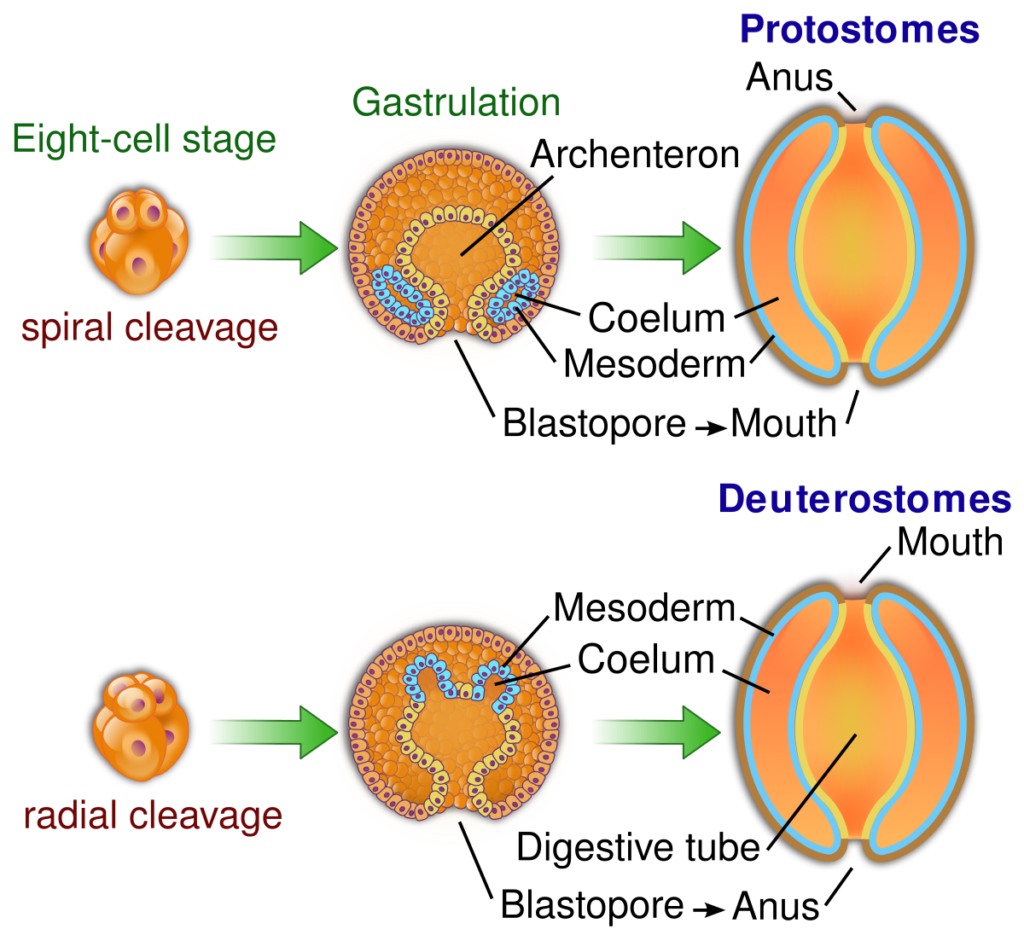
Protostomes
- Phylum Rotifera – Rotifers
- Phylum Nemertea – Ribbon worms
- Phylum Bryozoa – Colonial lophophorates
- Phylum Phoronida – Marine tubeworms
- Phylum Nematoda – Nematode worms
- Phylum Platyhelminthes – Flatworms
- Free-living (non-parasitic), Ectoparasites, Endoparasites (Flukes & Tapeworms)
- Phylum Molluska – Mollusks (chitons, snails, slugs, clams, mussels, oysters,squid, octopus, nautilus)
- Phylum Annelida – Segmented worms (earthworms, polychate worms, leeches)
- Phylum Arthropoda – Chelicerates (spiders, scorpions, ticks, mites, horseshoe crabs), Crusteceans (shrimp, ostracods, copepods, barnacles, crabs, lobsters, isopods), Myriopods (centipedes and millipedes), Insects
Deuterostome Characteristics
- Radial Cleavage
- – Cleavage occurs parallel to previous cells
- – Cells remain aligned during cell division
- Indeterminate Cleavage – any early cell can develop into complete embryo
- Enterocoelous Coelom Formation
- – Coelom = fluid filled body cavity contained within mesoderm
- – Mesoderm layer forms in inner wall of gastrula
- * Outpocketing of mesoderm
- * Grows between ectoderm and endoderm
- Blastopore becomes anus
- – a blastopore is an opening formed during gastrulation
- – Second opening develops into mouth
Vertebrates are Deuterostomes
Phylum Echinodermata – sea stars, brittle stars, sea urchins, sand dollars, sea cucumbers, feather stars, sea lillies
Phylum Hemichordata – marine acorn worms
Phylum Chordata – Urochordates, Cephalochordates & Vertebrates
1) What is cleavage and how can it distinguish deuterostomes from protostomes?
2) Describe how indeterminate growth can help distinguish deuterostomes from protostomes?
3) How does the formation of the coelom help distinguish deuterostomes from protostomes?
4) What is a blastopore and how does its formation help distinguish deuterostomes from protostomes?
5) Identify which phyla are classified as deuterostomes
Station 4: Chordate Characteristics
- Notochord – slender rod of tough fibrous tissue
- – provides axial support
- – dorsal to coelom and ventral to nerve cord
- – Name Chordata comes from this structure
- Pharyngeal gill slits
- – Pharynx – part of digestive tract posterior to mouth
- – occurs in all chordates at some stage
- – used for feeding in “primitive” chordates
- – adapted for use in respiration
- – allows one way flow of water – in mouth, out gill slits
- Dorsal Hollow Nerve Cord
- – lies above notochord
- – fluid filled central canal (compare to inverts – ventral, solid nerve cord)
- Postanal Tail
- – muscular posterior elongation of body behind anus
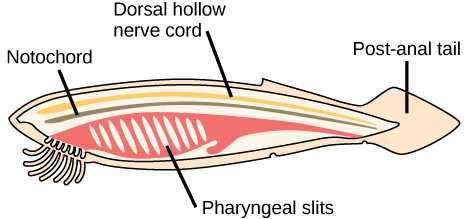
1) Name the four major chordate characteristics.
2) Describe how a notochord serves a function.
3) How do the nerve cords of chordates and most invertebrates compare?
4) Identify two functions that could be served by the formation of pharyngeal slits.
5) What adaptive advantage might a postanal tail have provided in the evolution of chordates?
Station 5: Urochordates & Cephalochordates
- Subphylum Urochordata – Tunicates
- Filter Feeding
- Two distinct Life Stages
- Adult – Sessile
- sedentary, attached to substrate
- has pharyngeal basket
- Planktonic Larvae
- tadpole-like form
- shows all chordate characteristics
- Adult – Sessile
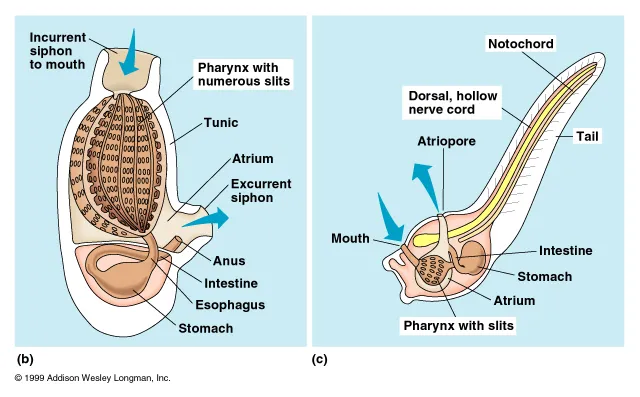
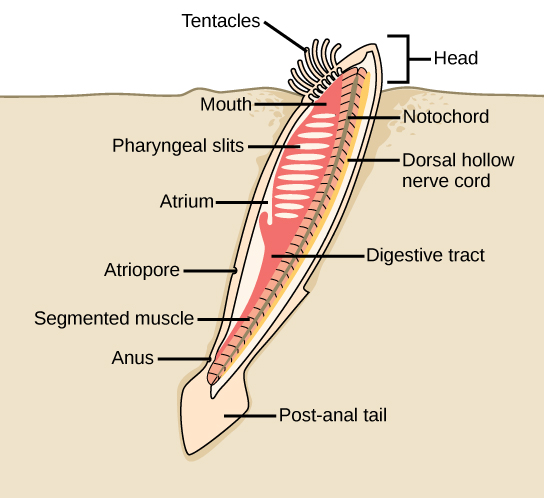
- Subphylum Cephalochordata – The lancelets
- – Amphioxus best known example
- – Retains primary chordate characters in adult
- – Myomeres
- * evidence of segmentation
- * series of striated muscle
- * arranged in chevrons <<<<<< along notochord
- – Filter Feeder
- * Buries into sand – mouth at top
- * one way current through pharyngeal gill slits
- * create current with cilia
- – Respiration
- * small enough to get oxygen via diffusion
- * hint of beginnings of respiratory structures at gill slits
1) Which life stage shows all four chordate characteristics in urochordates?
2) Draw your perception of a larval form of a urochordate and label key chordate structures.
3) Which chordate structures remain in the adult stage of the urochordate? What is its function there?
4) What key differences are there between cephalochordates and urochordates?
5) What sort of transformation process accounts for the adult form of Cephalochoradtes as compared to that of urochordates (from lecture notes)?
Station 6: Subphylum Vertebrata
- Vertebrae
- – form around the notochord
- – centrum
- * bony vertebral column replaces notochord in development
- – Neural arch – bone encircles nerve cord (forms neural canal)
- – Cartilagenous in some fishes
- – Some vertebrates lack vertebrae
- * hagfishes are without vertebrae

- Cranium
- – hard structure surrounding anterior brain
- – development of enlarged anterior portion of neural tube
- – Some researchers prefer the term Craniata to Vertebrata
- * Craniata includes hagfish

- Neural Crest Tissue
- – found solely in vertebrates
- – break out from neural folds
- * Migrate to permanent sites
- – Nervous tissue
- * cranial nerves
- * Schwann cells – Myelin sheath
- – insulating sheath around nerves
- – Pigment cells of the body
- * excluding retina and central nervous system
- – Several types of hormone producing cells
- – Head
- * cartilage and bone of the lower jaw and gill arches
- * core of teeth (dentin)
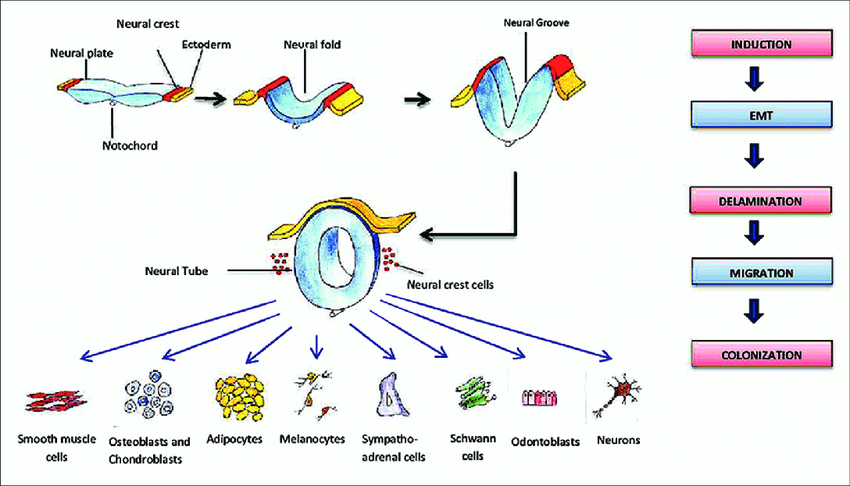
- Hox Gene duplication
- – Homeobox genes
- * Play key role in segmentation and development
- – Vertebrates thought to have at least 4 gene clusters
- * suggests at least two gene duplication events since invertebrates
- – Provides for great morpholigical complexity
- * allows for massive diversity of form and structure
- – Homeobox genes
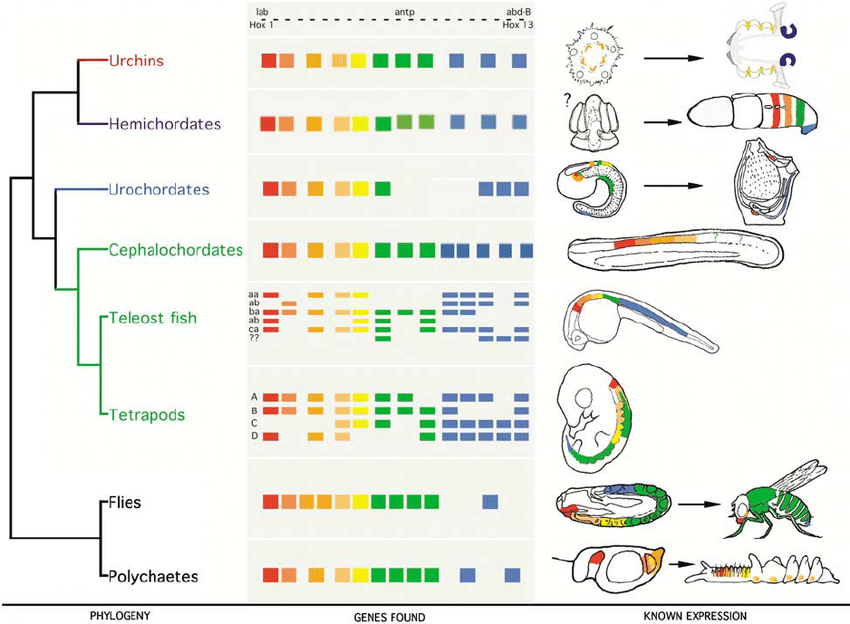
1) Examine the Whale Vertebra in the photo. Draw and identify the centrum and neural arch.
2) Which structure does the neural arch surround?
3) What is the role of the neural arch?
4) Why are vertebrae not the best key characteristic for all vertebrates?
5) What other morphological structure is becoming THE key structure for the subphylum Vertebrata?
6) Where does neural crest tissue form in a developing vertebrate embryo?
7) What types of structures are derived from neural crest tissue?
8) What is a Hox gene?
9) What does it mean that a gene duplication has occurred?
10) Why would Hox gene duplications play a key role in the diversity of form and function seen in vertebrates?
Station 7: Orientation
- Chordates: Characteristics among Animals
- Bilateral symmetry: mirror images on either side of midsagittal plane
- a. Anterior (cranial)- head end
- b. Posterior (caudal)- tail end
- c. Dorsal – back
- d. Ventral – front
- e. Medial – towards the midline
- f. Lateral – towards the side of the body
- g. Distal – part of appendage farther from the body
- h. Proximal – part of appendage close to the body

1) Find a partner (or stand in front of a mirror) and have them take the stance of a quadruped. Now describe, using their body as a reference, the terms below.
2) Then have your partner stand erect and repeat the process.
- Bilateral symmetry
- Anterior (cranial)
- Posterior (caudal)
- Dorsal
- Ventral
- Medial
- Lateral
- Distal Proximal
